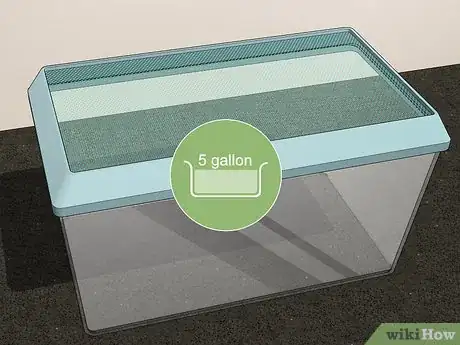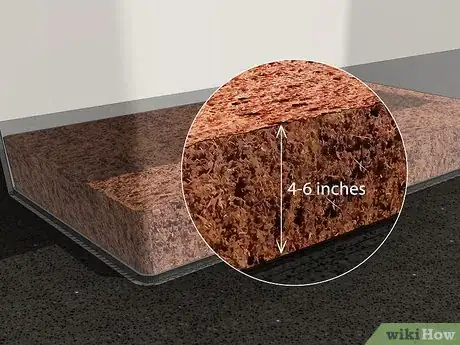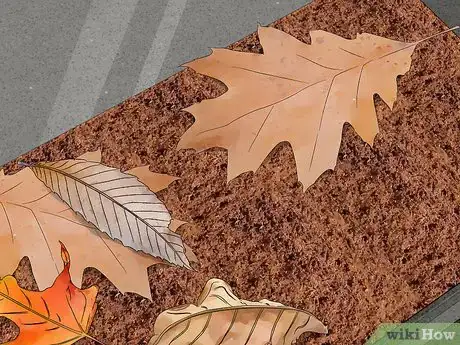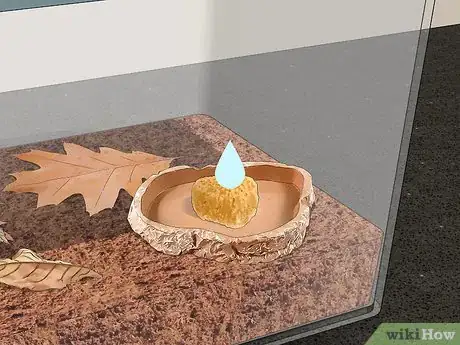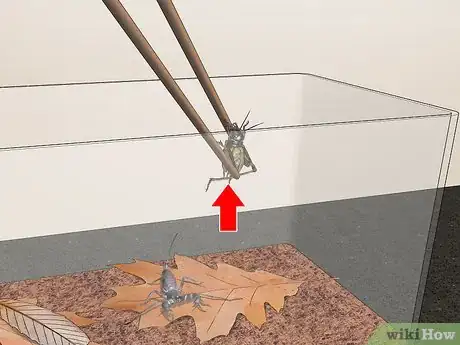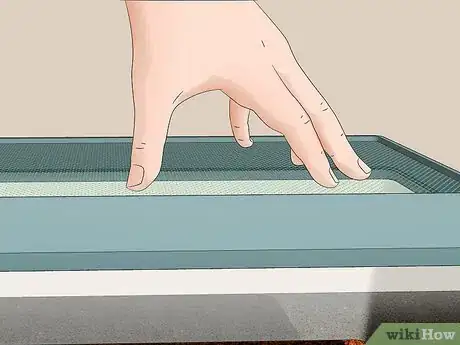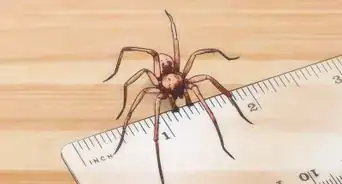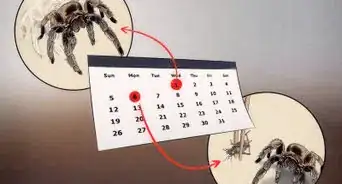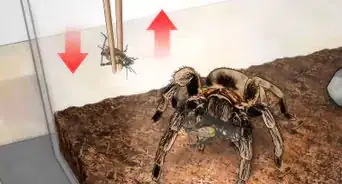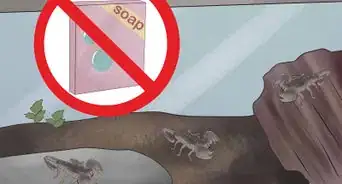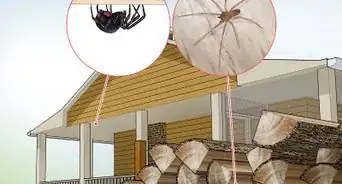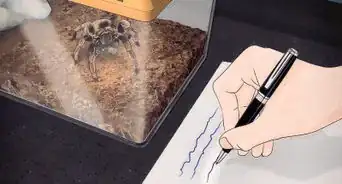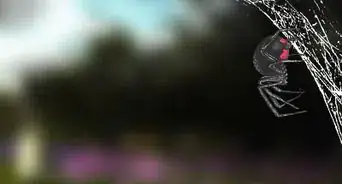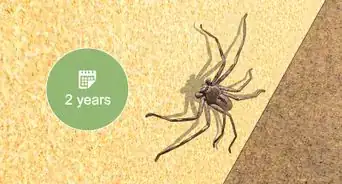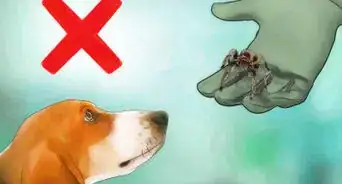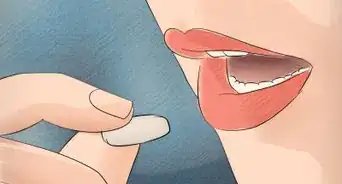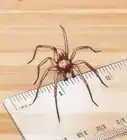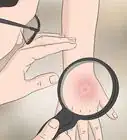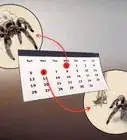This article was co-authored by wikiHow Staff. Our trained team of editors and researchers validate articles for accuracy and comprehensiveness. wikiHow's Content Management Team carefully monitors the work from our editorial staff to ensure that each article is backed by trusted research and meets our high quality standards.
wikiHow marks an article as reader-approved once it receives enough positive feedback. In this case, 100% of readers who voted found the article helpful, earning it our reader-approved status.
This article has been viewed 45,079 times.
Learn more...
The vinegaroon is a Nickname given to a species of arachnid found in the southern and southwestern portions of the United States. Actual name is Thelyphonida the species in the US. Sometimes referred to as whip tail scorpions. This is a misnomer since they are not a scorpion at all. But have some resemblance to them. If you're interested in keeping a Thelyphonida. You need to provide the proper environment. It's easy to keep a Thelyphonida. If you choose to handle them. It must be done with much care. They are somewhat delicate. Particularly their front legs which have developed into feelers. Their tails are also delicate and easily broken. With proper set up of an environment and providing acquitted food and water and your pet will thrive.
Steps
Setting up the Environment
-
1Get a tank. Vinegaroons are easily housed in a glass or plastic tank that can be safely sealed. Choosing a clear one so you can enjoy observing them when they came out of hiding. You will need a tank around 5 gallons (19 L). The US species can grow to a maximum length of 3.3 inches (8.4 cm). As with any animal vinegaroons will appreciate room to move around.[1]
- You can find a tank online or at a pet suppler. This photo is of the mother vinegaroon and her babies after their first molt. They hatch out appearing more white. They get color after their first molt. Their pedipalps are red at this time. They will darken as they get older.
- Tanks should have a mesh openings for circulation. It should one that closes securely. To keep your pet and its food inside. Plus unwanted pests, such as flies and gnats, out.
-
2Line the bottom of the tank with substrate. Use either peat moss, coco coir or potting soil as your substrate. Line the tanks with 4 inches (10 cm) to 6 inches (15 cm) of substrate before releasing your vinegaroon into the tank.[2]Advertisement
-
3Provide items for climbing and hiding. You can find rocks and hideaway caves, natural and artificial, at most pet suppliers. Since rocks can be heavy and possibly crush your pet, care should be taken to secure or remove them if you have to move the enclosure. Large dry, pesticide free leaves work well to provide hiding spots as well as cork bark tubes and flats. Cork materials are easily found in the pet trade. Vinegaroons can be kept as pets, but they're not considered domesticated animals. They prefer an environment that replicates the wild and will want places to climb and hide.[3]
- You can find rocks, bark and leaves outdoors Make sure they're free of any pest, pesticides or fertilizer before putting them in your pet's cage.
-
4Keep the tank between 75 °F (24 °C) and 80 °F (27 °C). As they're desert animals, vinegaroons need a warmer environment to thrive. Keep them in a space in your home that's free of drafts and make sure the tank is between 75 °F (24 °C) and 80 °F (27 °C) at all times. Usually, you'll need to keep a heat emitting bulb transferring heat trough a metal screened area or heat mat applied to the bottom of the enclosure. Monitor the temperature with a thermometer. Use some sense and do not apply a heat source that can over heat or start a fire. Adding a thermostat to control any heat source you apply the habitat is a wise choice. [4]
- You may have to tweak the settings of the heat source, or move it far away or closer to the tank, to provide the right temperature.
- You can get a heat emitting bulb and mat at the pet store or online supplier. A heat mat that is designed for seed trays controlled by a thermostat can be purchased at a hydroponic supply. They are made to be water resistant and are very durable. They can also be a good heat source.
-
5Provide a sponge and water for moisture. Vinegaroons do better with humidity. It's not necessary to strictly monitor humidity like you do with temperature, but keep a damp, natural sponge or just a shallow dish of water in the cage. In most cases, this will provide the moisture necessary for your pet to thrive. They do drink water and can sometimes be observed going to the water dish to drink. A small area of the habit can have water in the soil also to provide humidity. Take care not to put to much water on or in the soil. [5]
- It is always recommended, as with any pet, keep your water source clean. It will help to keep your pet healthy.
Providing Food
-
1Provide two to three crickets a month. Thelyphonida primarily thrive on a cricket-based diet. Two to three adult crickets is adequate to keep a scorpion healthy. People often overfeed them by providing 2- 3 crickets a week; 2 - 3 crickets a month will keep them happy. You can buy crickets at a pet store and can use either live or dead crickets. Live crickets are the better choice. They will also eat meal worms.[6]
- Crickets will keep your vinegaroon healthy, but a varied diet is a better option.
-
2Feed your Thelyphonida at night. As they are nocturnal they prefer to have many dark places to go into. It is best to feed your pet at night. This promotes the natural sleep/wake cycle of a Thelyphonida.[7]
-
3Watch for uneaten live food. It should be removed so that they will not attack your pet. Crickets have been known to attack and damage reptiles. If your Thelyphonida is not eating, this can be a sign of illness or that it is about to molt. They will not eat during the time before they molt. The females will not eat while they are watching over their eggs. When they do molt, you will usually find what appears to be your animal deceased. It will just be an empty exoskeleton. Your pet will probably be just hiding so don't throw out the dirt and possibly your pet. They will be very hungry after molting.
Community Q&A
-
QuestionWould the Vinegaroon die if the burrow caves in?
 Community AnswerNot usually, Vinegaroons, like many other bugs, have a hard exoskeleton and a little dirt won't hurt them.
Community AnswerNot usually, Vinegaroons, like many other bugs, have a hard exoskeleton and a little dirt won't hurt them. -
QuestionAre tarantula's or Vinnie's better?
 Community AnswerTrantulas are very low maintenance but Vinegroons look cooler, so it's your choice.
Community AnswerTrantulas are very low maintenance but Vinegroons look cooler, so it's your choice. -
QuestionWhat can I do if the temperature exceeds 70-80 degrees?
 Community AnswerThere's not much you can do except lower your atmospheric temperature and utilize any fans you might have.
Community AnswerThere's not much you can do except lower your atmospheric temperature and utilize any fans you might have.
References
- ↑ http://www.petbugs.com/caresheets/M-giganteus.html
- ↑ http://www.petbugs.com/caresheets/M-giganteus.html
- ↑ http://www.petbugs.com/caresheets/M-giganteus.html
- ↑ http://www.petbugs.com/caresheets/M-giganteus.html
- ↑ http://animals.mom.me/keep-scorpion-pet-1020.html
- ↑ https://www.amentsoc.org/insects/caresheets/scorpions.html
- ↑ https://www.amentsoc.org/insects/caresheets/scorpions.html
